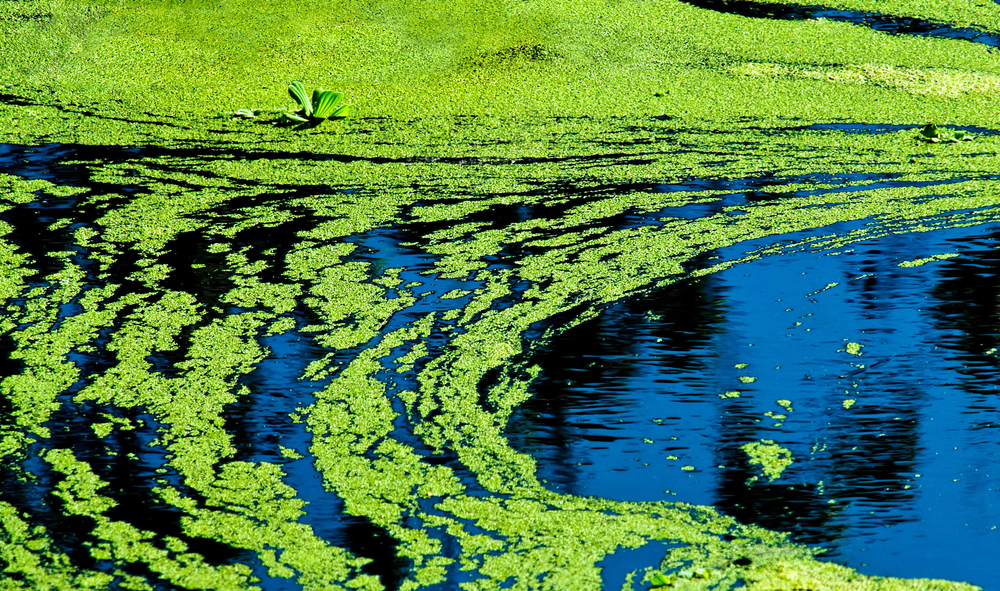Blue-green algae are a common sight at summer swimming holes and lakes. Also known as cyanobacteria, blue-green algae are a class of bacteria capable of using sunlight as an energy source through photosynthesis. Despite being well-known and well-studied, a group of McGill researchers uncovered an unexpected and surprising activity in an enzyme made by these microbes in a recent study: The enzyme can make its own primers, and therefore self-produce biopolymers.
Cyanophycin synthetase (CphA1) is an enzyme used by cyanobacteria to make an amino acid polymer—a chain of amino acids, the same molecules that make up proteins—called cyanophycin. The cell uses this polymer to store energy, amino acids, and nitrogen that can be later accessed when nutrients become scarce. CphA1 has been harnessed by scientists for the industrial production of cyanophycin, which can be used to make plastics found in acrylic nails and paints—polyaspartic acid, a biodegradable alternative to polyacrylate.
In an email to The McGill Tribune, Itai Sharon, McGill PhD student and lead author of the paper published in Nature, detailed the complex relationship between cyanophycin and CphA1.
“CphA1 needs a primer, ideally a short cyanophycin chain, to be active, and this creates a bit of a chicken and egg problem,” Sharon wrote. “The enzyme needs cyanophycin to make cyanophycin.”
Sharon works with peptidases, enzymes that cut up proteins. Upon comparing enzyme structures, Sharon noticed that CphA1 had an active site, a region on an enzyme that interacts with other proteins, with a similar structure to the peptidases—suggesting that CphA1 may also have the ability to cut up proteins, like molecular scissors. Sharon also discovered that this active site in CphA1 had binding sites for cyanophycin—an unexpected finding for a well–studied enzyme like CphA1.
“Even though at the time we did not know where those results would lead us, we decided to perform more experiments to determine whether this peptidase-looking part of CphA1 really does have this kind of [cutting] activity,” Sharon wrote. “To our surprise, we found that it did.”
CphA1’s ability to make its own primers allows the enzyme to use cyanophycin already present in the cell to make new polymer chains. This means the amount of cyanophycin CphA1 can make isn’t limited by the available quantity.
This finding has important considerations for CphA1’s use in industrial production of cyanophycin as a water softener or in plastics. As cyanophycin production is cheaper and more environmentally friendly than trying to chemically synthesize polyaspartic acid or polyacrylate plastics, scientists have been working to improve the biological production of the polymer. In order to optimize production, cyanophycin synthetase is often expressed in bacterial or fungal hosts that grow rapidly and are easy to work with. But these hosts don’t naturally produce cyanophycin, and thus don’t have suitable primers for CphA1, limiting the amount of polymer that can be made.
“That is why it’s important that CphA1 can create its own primers, to ensure that primer availability does not limit the amount of cyanophycin that can be produced,” Sharon said.
CphA1’s ability to make its own primers was an unexpected discovery that could reduce the cost and environmental impact of cyanophycin production. Scaling up cyanophycin production would allow for widespread use of the environmentally-friendly polymer in nail polish and paint, as well as its use as an eco-friendly water softener. No matter how much research has been done on an enzyme or how many labs have worked on it, enzymes like CphA1 will always have surprises in store.










Thank you so much for sharing this informative update. It has a very simple solution to the problem.